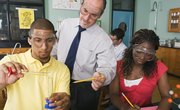Teachers often assume that if they’re using interactive white boards, clickers or electronic tablets in their classrooms, then they’re practicing 21st century education. While these technologies can certainly be included in 21st century learning, hardware and software have very little to do with best practices. In actuality, the best educational practices for 21st century education are those that encourage collaboration, communication and critical thinking.
ISTE Standards
ISTE, the International Society for Technology in Education, has developed a list of standards it considers essential for student success both at school and in the future. ISTE encourages teachers to create lessons that involve creativity and innovation, technology operations, digital citizenship, critical thinking, research and information, and communications and collaboration. ISTE provides many free resources to educators looking to integrate 21st century skills into their lessons.
Collaboration
As new technology further connects our world, students must learn the skill of collaboration. It wasn’t that long ago that collaboration in the classroom meant simply pairing students together for an assignment or having them work on a group project. Now, though, students can -- and should -- learn to collaborate not only in a face-to-face environment but in a digital environment as well. Technologies such as Skype, SlideShare, blogs and wikis all facilitate digital collaboration among students and can be used to give students practice with collaborating in a digital environment.
Communication
Just as collaboration no longer needs to take place face to face, communication has also shifted to a largely digital platform, and students need to learn communication strategies that work in a digital environment. A big area of focus here should be on digital citizenship, especially for younger students who may lack the skills and experience communicating online. In addition to digital citizenship, students must also learn the value of communicating through various digital mediums to include video, audio and written.
Critical Thinking
Applications and technology will change, but a critical thinker will be able to adapt to these changes. An employee who can think critically is highly valued, and students who develop critical thinking skills early will be at an advantage in the job market. A critical thinker can see opportunity in emerging technologies, make smart choices for his or her company, and understand how his or her actions impact the bottom line. Critical thinking skills can be easily developed through traditional and digital methods and should be taught across all subject areas.
Related Articles
References
Resources
Writer Bio
Rochelle Spears Wilson holds a MA in professional writing and a BA in English. She was a classroom teacher for nine years and taught English, social studies and technology. She has worked with students in grades 4-12 and now owns her own consulting business.










